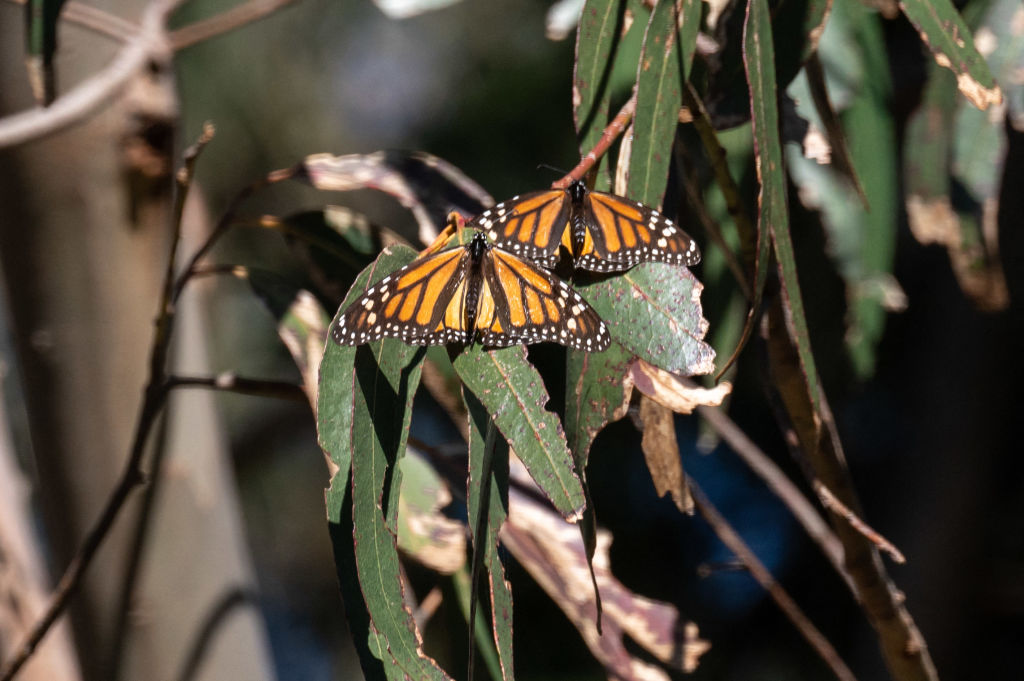Summary of Monarch Butterflies Fly Farther With White Spots: A New Study Reveals the Secrets of Their Amazing Migration:
A new study suggests that the white spots on the wings of monarch butterflies help them fly more efficiently during their long-distance migration from North America to Mexico. The researchers found that monarchs with more white spots on their wings were more successful at reaching their wintering destination. The white spots may alter airflow patterns and help the butterflies capitalize on solar energy. The study also found that monarchs had more prominent white spots than nonmigratory butterfly species. During migration, climate change, habitat loss, pesticide use, diseases, and human activities are threats that monarchs face. Understanding how wing coloration affects migration can contribute to their survival and protection.
*****
As the fall season approaches, one cannot help but marvel at the incredible migration journey undertaken by Monarch butterflies. These delicate creatures embark on an epic voyage from North America to Mexico, covering thousands of miles with astonishing precision. But have you ever wondered how they fly so far and efficiently? A recent study has shed some light on this fascinating phenomenon, revealing the secrets behind their remarkable migration.
The study, published in PLOS ONE, focused on the distinctive wing coloration of Monarch butterflies and its impact on their flight capabilities. The researchers analyzed nearly 400 wild Monarch wings collected at various journey stages, carefully measuring their color proportions. What they discovered was truly remarkable.
Monarchs with more white spots on their wings were more successful at reaching their wintering destination. It turns out that these white spots play a crucial role in altering airflow patterns around the wings, thereby improving their aerodynamics. The spots also have the potential to help the butterflies capitalize on solar energy, as they are exposed to more sunlight during their migration. The white spots can affect the lift and drag forces by creating subtle temperature differences on the wing surface, facilitating their long-distance flight.
Interestingly, the researchers compared the wing coloration of Monarchs with six other butterfly species, some of which do not migrate or migrate only partially. The results revealed that Monarchs had significantly larger white spots than their non-migratory counterparts. The only other species that came close to matching the proportion of white spots on Monarch wings was their semi-migratory relative, the southern Monarch.
These findings have important implications for the future of Monarch migration, particularly in the face of climate change. Monarchs may have to adapt to maintain their aerial efficiency as temperatures continue to rise and alter solar radiation reaching Earth’s surface. The greater solar intensity could diminish their efficiency, hindering their fall migration to Mexico. This highlights the urgent need for conservation efforts to protect the Monarch habitat and ensure survival in changing environmental conditions.
However, climate change is not the only threat Monarchs face along their arduous journey. They also must contend with habitat loss, pesticide use, diseases, parasites, and human activities that disrupt their migration. These challenges pose significant risks to their survival and must be addressed to safeguard the future of these beautiful creatures.
Habitat loss is a particularly pressing issue for Monarchs. They rely on milkweed plants to lay their eggs and feed their caterpillars, but sadly, milkweed populations have declined drastically in North America. This decline can be attributed to agricultural expansion, urbanization, and the use of herbicides. Farmers often spray their fields with herbicides that kill milkweed and other weeds, thus depriving Monarchs of their essential food source. Furthermore, nectar plants, crucial for fueling their flight, have also become scarce in many areas, exacerbating the challenges these already beleaguered creatures face.
Pesticide use poses another significant threat to Monarchs. Insecticides applied to crops or sprayed aerially to control pests can harm the butterflies. Certain insecticides, such as permethrin and Bt (Bacillus thuringiensis), can prove fatal to Monarch caterpillars if they come into contact with them or ingest them through milkweed leaves. Additionally, neonicotinoids, a class of insecticides, can impair Monarchs’ ability to navigate and reproduce, further jeopardizing their survival.
Diseases and parasites also take a toll on Monarch populations. Infections and infestations can diminish their overall health, reducing their survival and reproductive capacities. One of the most harmful parasites affecting Monarchs is Ophryocystis elektroscirrha (OE), a protozoan that infects them during their larval stage. OE causes deformities and weaknesses in adult Monarchs, spreading rapidly among dense populations, such as those in overwintering sites or breeding grounds.
Human activities add to the myriad of dangers faced by Monarchs. The disturbance or destruction of their habitats, interference with their migration routes, and illegal hunting and collection of Monarchs all contribute to their decline. Logging and mining in their overwintering forests in Mexico and avocado farming in Michoacán pose significant threats to their habitat integrity. Furthermore, roadside maintenance can eradicate milkweed and nectar plants along migratory corridors, exacerbating their diminishing resources.
It is essential to recognize that Monarchs are not merely beautiful and fascinating creatures but also vital pollinators and indicators of environmental health. Understanding the role of wing coloration in their migration provides insight into their survival and protection. By unraveling the secrets of their incredible journey, we can take proactive measures to conserve their habitat, mitigate the impacts of climate change, and address the various threats they face.
In conclusion, Monarch butterflies’ migration is a remarkable natural phenomenon. Their ability to fly thousands of miles with precision and efficiency is a testament to their resilience and adaptability. The recent study highlighting the role of white spots on their wings in their migration sheds new light on this incredible journey. However, it also serves as a powerful reminder of Monarchs’ challenges, including climate change, habitat loss, pesticides, diseases, parasites, and human interference. By understanding these challenges and taking action to protect Monarchs and their habitats, we can ensure their survival and continue to enjoy the awe-inspiring spectacle of their annual migration.

